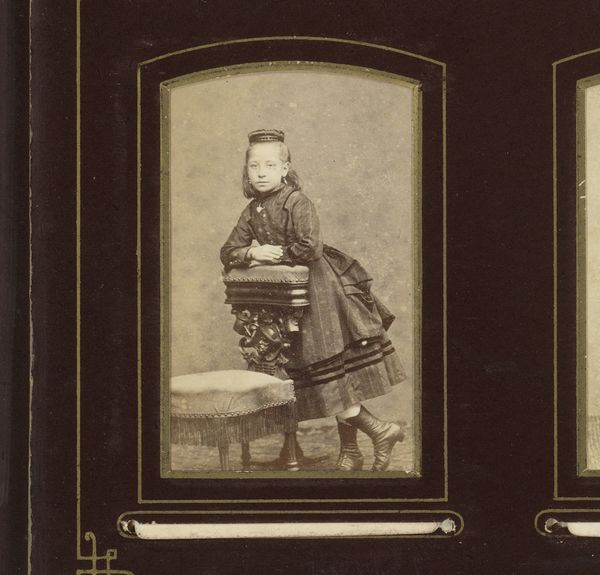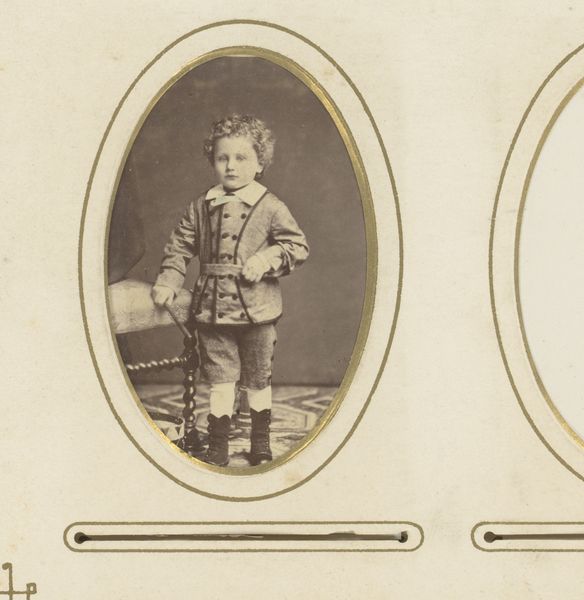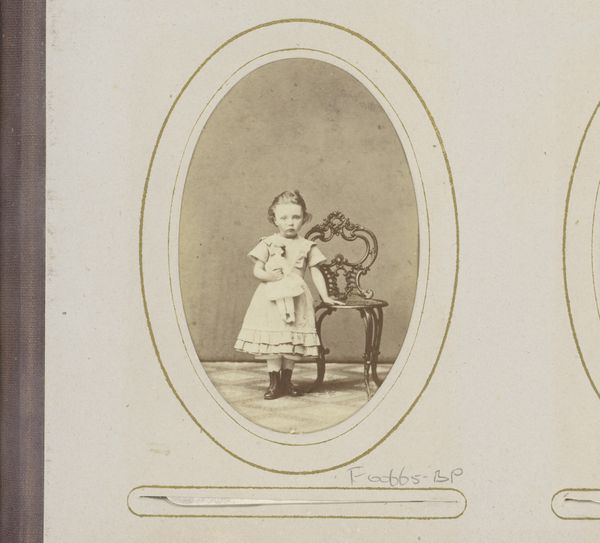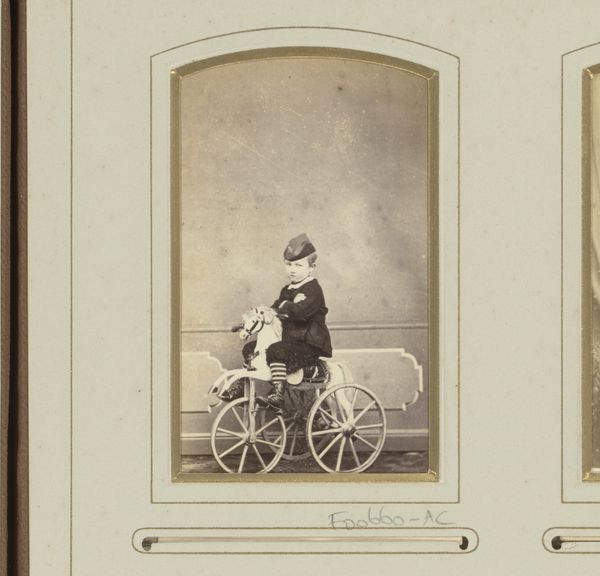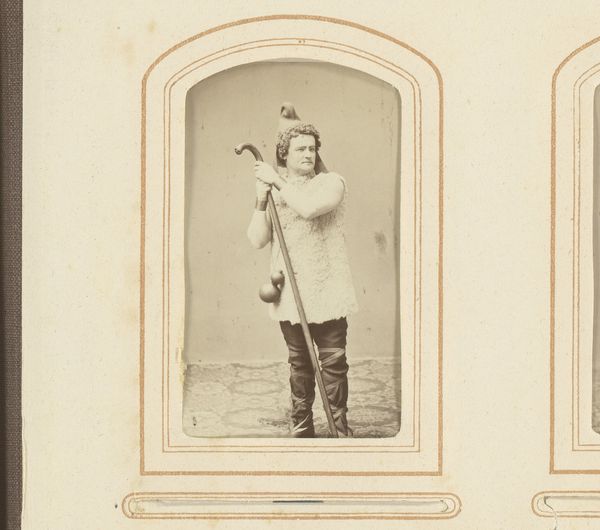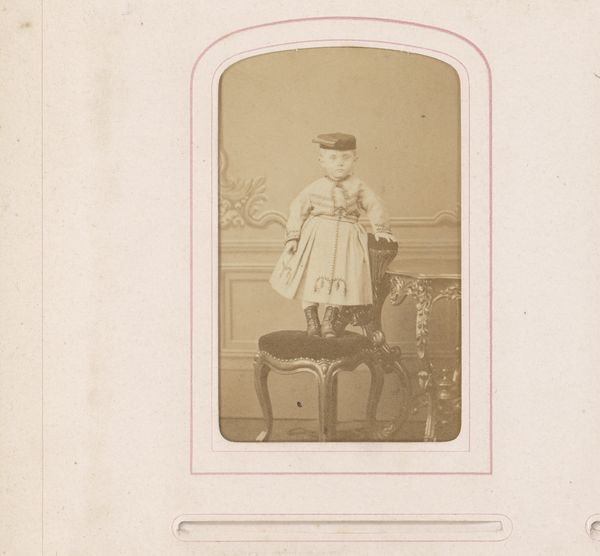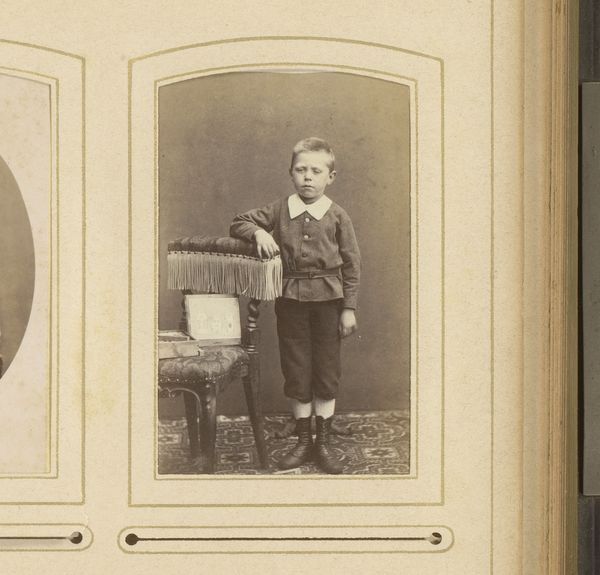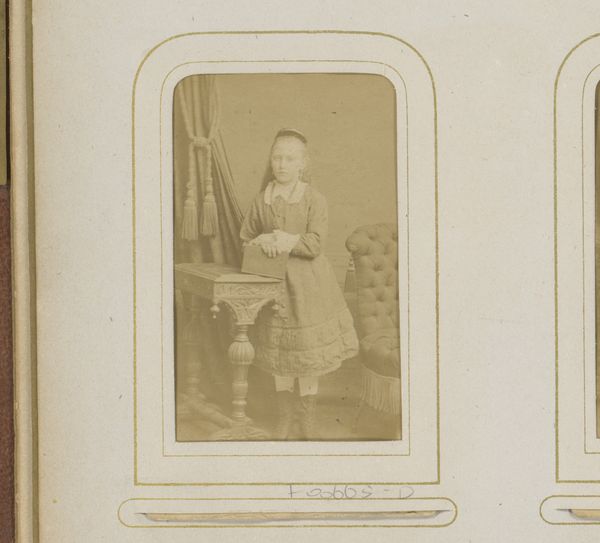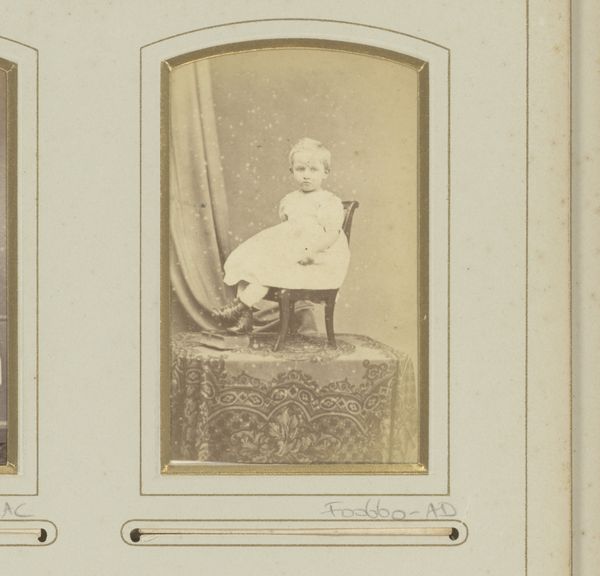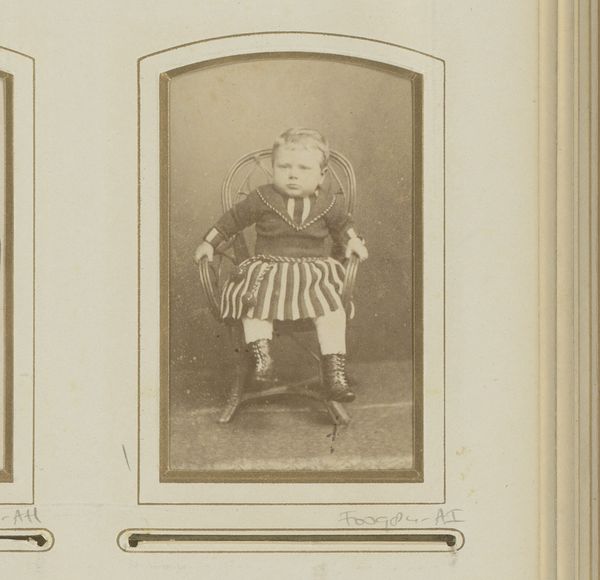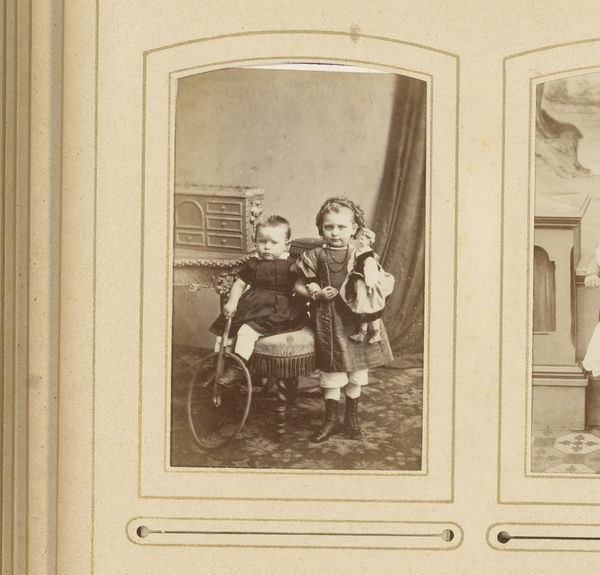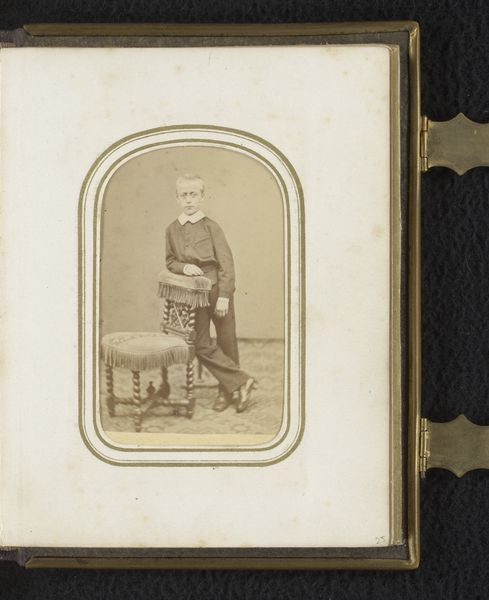
photography
#
photography
#
genre-painting
Dimensions: height 82 mm, width 50 mm
Copyright: Rijks Museum: Open Domain
Editor: Here we have Charles Binger's photograph, "Portret van een jongen, staand op een stoel" or "Portrait of a boy, standing on a chair", taken sometime between 1862 and 1869. It's a charming glimpse into the past, the boy looks mischievous. What strikes you when you see this piece? Curator: Well, this photograph exists not just as a simple portrait, but as a crafted image intended for public consumption within specific social and cultural contexts. We must consider the institutional conventions that shaped the photographer's choices, and by extension the boy's representation. Notice the studio setting. This chair, not an everyday object, stages him. The flecks are reticulation artifacts created in film processing but might evoke domestic dust, or even the passing of time and memory itself. Editor: You're right, the staging does feel very deliberate. It also feels very posed. Do you think there's a kind of political element at play, too? Curator: Definitely. The act of portraiture itself, particularly of children, carried considerable social weight at this time. It symbolized status, belonging, family identity. This seemingly innocent image likely reinforced specific bourgeois ideals and family structures. The image became a visual tool in constructing and broadcasting a certain identity to the outside world, didn’t it? Editor: That makes total sense! It's easy to see it as a sweet picture, but so much more is going on. Thanks for broadening my view! Curator: My pleasure. Analyzing the interplay between artistic intention, societal values, and visual culture always offers a more complex understanding. I think you will start seeing this play out in even seemingly "innocent" imagery.
Comments
No comments
Be the first to comment and join the conversation on the ultimate creative platform.
